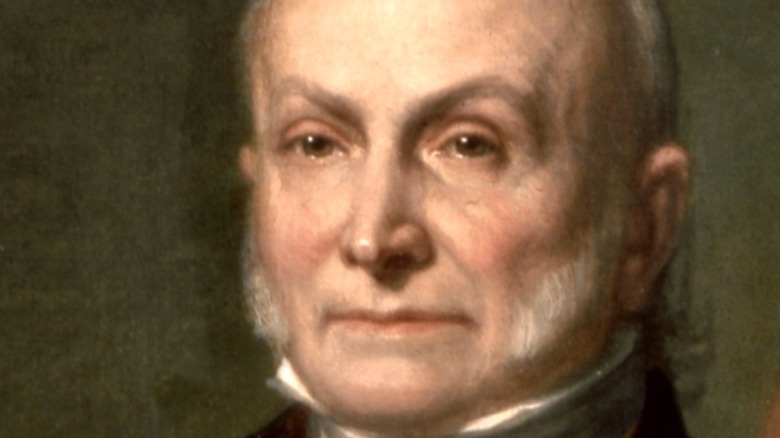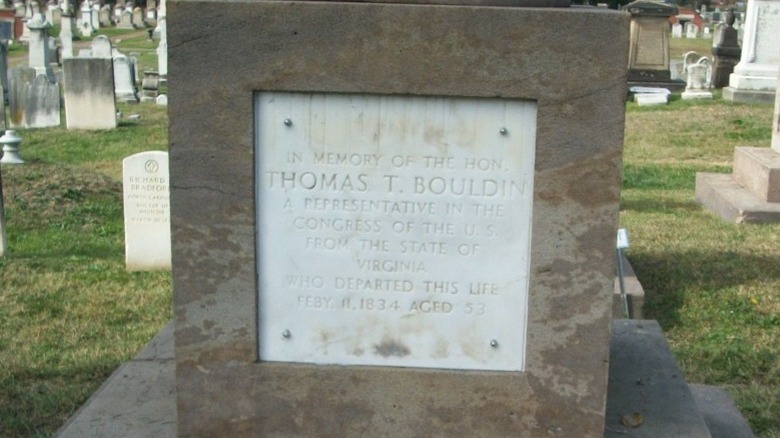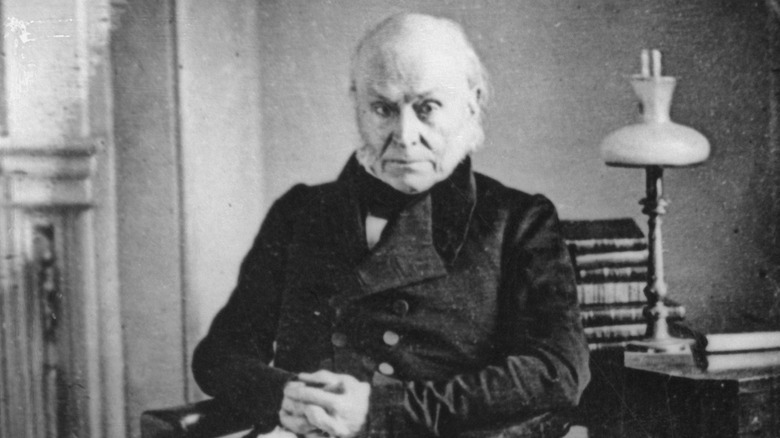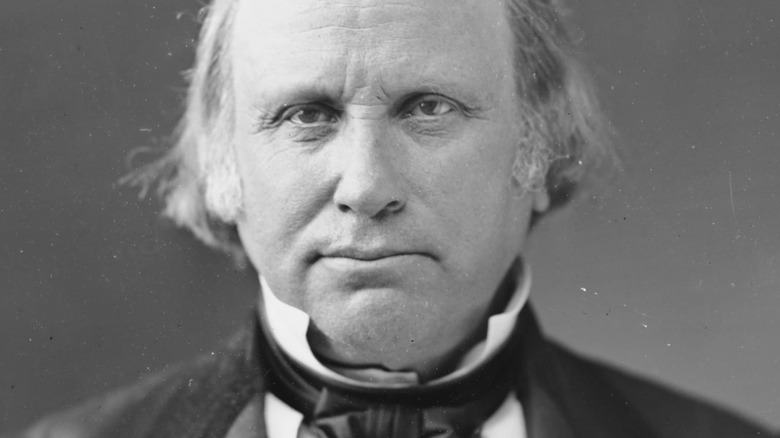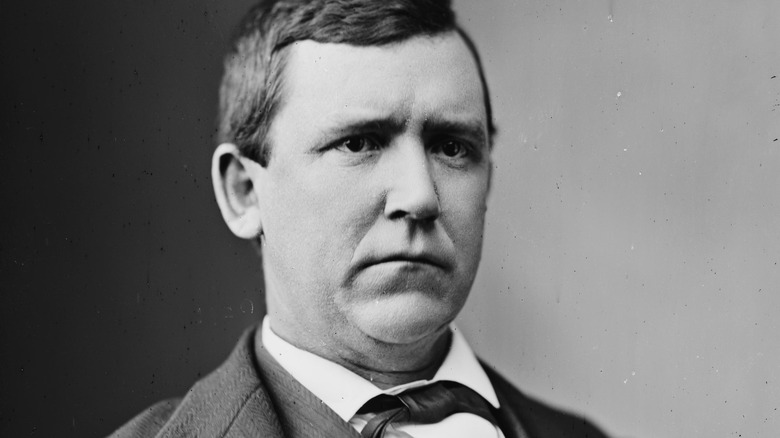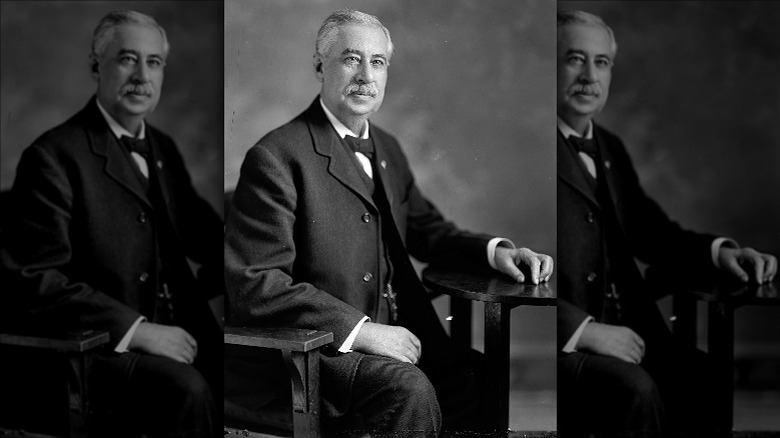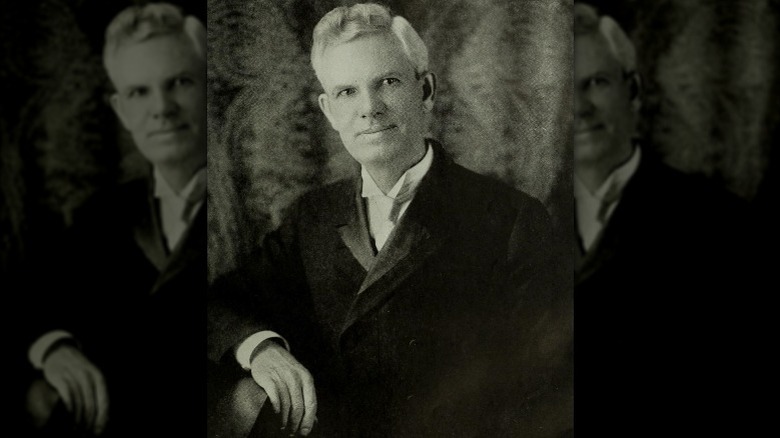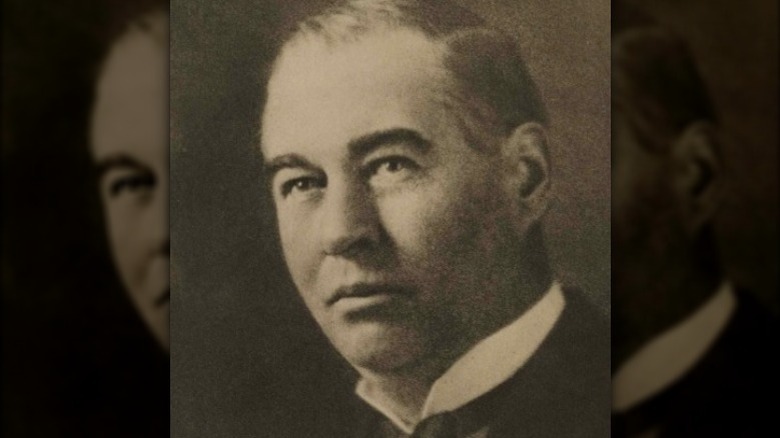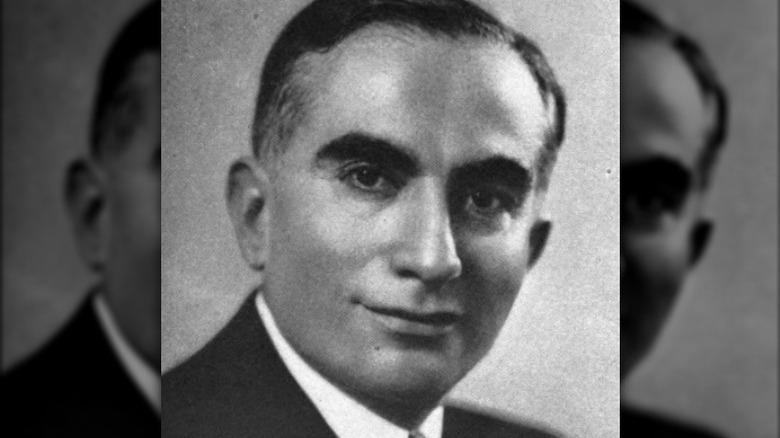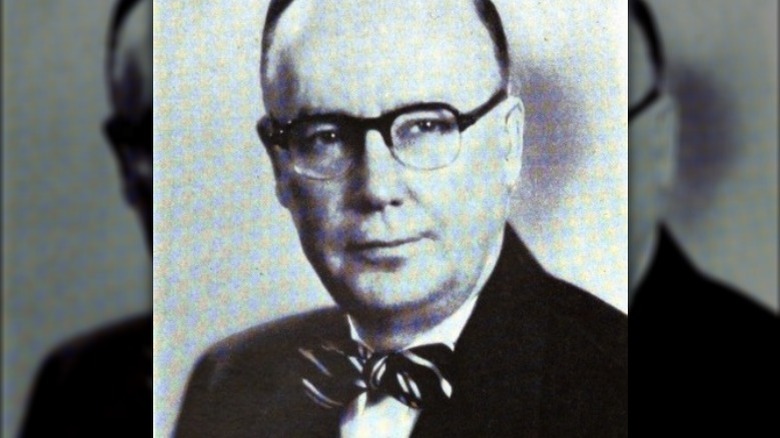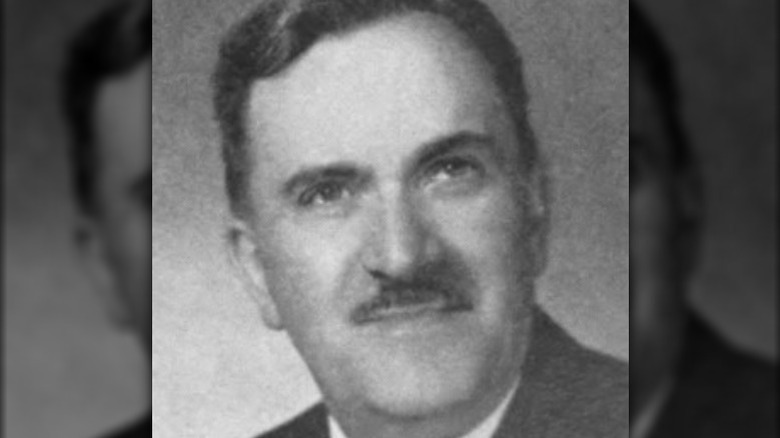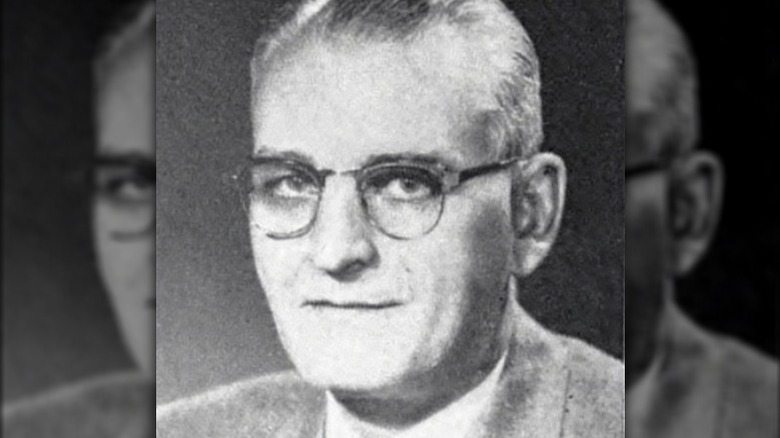Politicians Who Died In The Capitol Building
Even though policy is important in the moment, and does create lasting change, there is a large amount of government work that is behind the scenes and never considered by most people. A working government is made up of so many people who aren't thought about by the general public on a daily basis. Fifty years on, who really remembers who the American vice president was for those four years, let alone who the two representatives from Rhode Island or Arkansas were?
That might be why you aren't aware of anyone who died in the USA's seat of government, but more politicians than you'd think have actually died in the Capitol building, several while in the process of addressing Congress. People die every day, of course, but politicians are the faces behind the government. Somehow it seems strange to conceive of someone who regularly passes laws that affect millions of people dying of something as mundane as a heart attack.
Nonetheless, over a dozen politicians have died in the Capitol building since it was built in 1793 (via Visit the Capitol). These men didn't get to finish out their terms in Congress, or finish furthering their goals for America and her people. Let's learn their stories.
Francis Malbone (1759-1809)
Francis Malbone Jr. was a Federalist representative and senator from Rhode Island. As a boy, he received little schooling. Working in Newport, he first became a merchant and later became a colonel in the Newport Artillery, a post he held for the next 17 years, writes Congress' Biography Guide. He continued to serve in the Newport Artillery until his death, writes History, Art, and Archives of the U.S. House of Representatives. He was also a captain in the Rhode Island militia.
Malbone was elected to Congress for two terms as a representative of Rhode Island but was not eligible for renomination. He was then a member of the Rhode Island House of Representatives in 1807 before being elected to the U.S. Senate two years later. Malbone served as a senator for just three months before dying on the steps of the Capitol building in June 1809, aged 50. He was interred in the Congressional Cemetery in Washington, D.C.
Thomas Tyler Bouldin (1781-1834)
Thomas Tyler Bouldin was likely born in Charlotte County, Virginia to a prominent family. His mother was sister to Governor John Tyler Sr., making Bouldin a cousin of President John Tyler. He studied law and joined the General Court in 1821, originally filling a vacancy and later being elected to the post. He served there for eight years, hearing criminal cases and appeals. His opinions are generally seen as sparse in style (via Encyclopedia Virginia). He also opened a law practice after being admitted to the bar in 1802 and owned a plantation. When he died he owned nearly 2,300 acres of land.
Bouldin married Ann Bickerton Lewis in 1804. They had 11 children before she died in 1823. He remarried two years later, and had four sons with his second wife Eliza, writes Encyclopedia Virginia.
Bouldin was a protégé of Roanoke's John Randolph, and won election twice as a member of the U.S. House of Representatives. But after his second term ended, he lost reelection to Randolph. However, when Randolph died in office that same year, 1833, Bouldin was set to carry out the rest of his term. Unfortunately, he collapsed on the House floor in 1834 and died soon after. Bouldin was buried in a Charlotte County cemetery. John Quincy Adams wrote of him in his diary (via Encyclopedia Virginia), saying: "Bouldin was a man of good disposition and sterling integrity, warped sometimes into great curvature by the political prejudices of the Virginia school."
John Quincy Adams (1767-1848)
John Quincy Adams served as America's sixth president. He wore many hats throughout his life, since he also served as a representative of Massachusetts, a senator, and a diplomat to Russia under President Madison. He was the first son of a president who would later become president himself; when his father, John Adams, was in Europe, John Quincy served as his secretary. He was later appointed Secretary of State under President Monroe, and assisted with the creation of the Monroe Doctrine, writes the White House.
On February 21, 1848, the then-80-year-old John Quincy Adams suffered a stroke on the House floor, collapsing at his desk. Just prior he had voted against sending a resolution to the Committee on Military Affairs. Washington Hunt of New York brought notice of his collapse to the rest of Congress. Adams was quickly moved to the Rotunda and later the Speaker's Room. After thanking the members of Congress, Adams slipped into a coma and died two days later.
According to History, Art, and Archives of the U.S. House of Representatives, his funeral was held five days after his stroke. His body was held in the Congressional Cemetery until he was moved to his family's burial plot in Quincy, Massachusetts. A marker still remains in the Congressional Cemetery for him.
Henry Wilson (1812-1875)
Henry Wilson was born into hardship in Massachusetts and had little schooling, but he read voraciously and later learned shoemaking. While traveling, he witnessed the hardships of slavery and became an abolitionist. Wilson was also interested in the temperance movement and education reforms. He ran for the state legislature and won multiple times in the 1830s and 1840s.
Wilson then served as a Massachusetts senator for 18 years. During that time, he traveled in Massachusetts extensively to see what the public thought of policy issues. As his friend George Hoar remembered (via the United States Senate), Wilson would talk over what the people had said without sharing his own opinion, "but at length when the time came, and he had got ready, the easterly cloud seemed suddenly to have been charged with an electric fire and a swift and resistless bolt flashed out, and the righteous judgment of Massachusetts came from his lips."
Wilson served as vice president under Ulysses Grant, from 1873 to his death in 1875. To help Grant's and his campaign, Wilson went on a speaking tour in 1873, which ruined his health. He suffered a stroke later that same year. Then in 1875, Wilson was in the Capitol when he was abruptly struck by paralysis and was carried to his office near the Senate floor. He died 12 days later.
Alpheus Starkey Williams (1810-1878)
Alpheus Williams was a Union general in the American Civil War. He was born in Connecticut in 1810. After he graduated from Yale in 1831, he studied law and traveled the world, writes "From the Cannon's Mouth," a book of his letters during the Civil War, which were written mostly to his daughters Irene and Mary. Williams moved to Detroit in 1836, and kept the city as his home until his death.
Williams bought a local paper in 1843, which he owned for five years. Soon after that, he became postmaster of Detroit, and he held various other civil service offices before the Civil War broke out. During the war, he held the rank of brigadier general of the volunteering soldiers, writes Joseph Greusel in "General Alpheus S. Williams."
In his later years, he served as a Democratic U.S. Representative from Michigan. Williams also served as the chairman of the committee on the District of Columbia. He had a stroke and died in the Capitol building in 1878. He was interred in Elmwood Cemetery in Michigan, writes Biographical Directory of the U.S. Congress.
William Preston Taulbee (1851-1890)
In 1890, a newspaperman named Charles Kincaid shot William Taulbee on the east staircase of the House Wing of the Capitol. The two men had a contentious relationship ever since 1887, when Kincaid wrote a piece which implicated Taulbee in an affair.
According to History, Art, and Archives of the U.S. House of Representatives, Taulbee had served two terms as a Democratic representative from Kentucky, from 1885 to 1889. He had been taught by his father while growing up and was ordained for the ministry. Taulbee later studied law. Though he hadn't opted to serve a third term in Congress, he continued to have run-ins with Kincaid, who covered Congress as his journalistic beat for the Louisville Times.
The two men got into a physical altercation prior to the shooting. Taulbee died 11 days after being shot and was buried on his family's burial grounds in Kentucky, writes History, Art, and Archives of the U.S. House of Representatives. Kincaid was later acquitted of murder on the grounds of self defense.
Augustus Hill Garland (1832-1899)
Augustus Hill Garland started out as a lawyer, opening a law practice in 1853, and also briefly taught school, writes the Encyclopedia of Arkansas. Before the Civil War, Garland opposed his state's seceding from the Union. But when President Lincoln called for the state militias to assemble just a few days after the attack on Fort Sumter in 1861 (via U.S. Senate), Garland agreed to support secession. During the war, Garland served on various committees in the Confederate Congress.
After the war, Garland was pardoned and took up his law practice again. He was entangled in the contentious Arkansas gubernatorial race of 1872, and was then elected himself two years later as Arkansas' 11th governor, and assisted the state with finances during his time in office. Garland was elected to the U.S. Senate in 1876, and served on a number of committees during his time there. Among other issues, he worked to regulate the federal prison system and sought federal funds for education. In 1885, Garland resigned from the Senate to work as President Cleveland's attorney general, becoming the first person from Arkansas to have a cabinet position.
While Garland retired from politics in 1888, after Cleveland lost reelection, he continued to argue cases in front of the Supreme Court, and died of a stroke while in the Capitol building. He was buried in Little Rock, Arkansas.
William John Browning (1850-1920)
William John Browning was a Republican representative from New Jersey. He was born in Camden, and attended the Friends' School. In his younger years, Browning ran a dry goods business in Camden. He was later appointed the city's postmaster, in 1889, and served in that position for five years. Eventually, a successor was appointed, and Browning could take up some of his other interests full-time, one of which was education. Browning was a member of the city council as well as the city's education board.
He was originally elected to Congress to fill a vacancy due to Representative Henry Loudenslager's death in 1911. He also served as Chief Clerk of the House for 16 years when he was a representative. Nine years afterwards, he died himself in the Capitol building. Browning was interred in Camden's Harleigh Cemetery, writes History, Art, and Archives of the U.S. House of Representatives.
Martin Madden (1855-1928)
Martin Madden was born in Wolverton, England in 1855. He and his family immigrated to Boston and later Lemont, Illinois in 1869. Madden joined the stone quarries the next year, first as a water boy and later working on the barge lines. He injured one of his legs so severely that it had to be amputated. As compensation, he was given a job as a clerk. Madden rose to be the president of the Western Stone Company by 1895, writes Indian Prairie Public Library.
Madden married his wife Josephine in 1878; they had one daughter, Mabel. Madden decided to enter politics in the 1880s, and served on the Chicago City Council.
Madden served in the House of Representatives for 23 years, from 1905 to his death in 1928, as a Republican representative from Illinois. He was chairman of the House Appropriations Committee. Madden was speaking with Representative Elliott Sproul, also of Illinois, when he collapsed. He died suddenly in his Capitol building office in 1928, likely of hardening of the arteries, writes Illinois Digital Newspaper Collections. After his heart stopped beating, Sirovich attempted to restart it artificially, but to no avail. Sirovich said that he had warned Madden about his heart recently. When the death was announced to the House, they immediately adjourned for the day.
Edward Eslick (1872-1932)
Edward Eslick was a lawyer and was admitted to the bar in 1893, writes Biographical Directory of the U.S. Congress. He was also interested in agriculture and banking. He served as a Government appeal agent during World War I.
Eslick elected as a representative from Tennessee. He died of a heart attack while addressing the House of Representatives about the World War I Veterans Bonus Bill, speaking strongly in favor of it. The House passed the bill by a vote of 211 to 176, according to the History, Art, and Archives of the U.S. House of Representatives. World War I veterans were lobbying for a cash payment for their service, and many were camping in shanty towns in Washington to make sure it passed. Sadly, the bill failed in the Senate.
His wife Willa McCord Blake Eslick filled the vacancy caused by his death, and carried out the rest of his term until 1933. She was not, however, eligible for reelection, according to the Biographical Directory of the U.S. Congress.
Morris Michael Edelstein (1888-1941)
Morris Michael Edelstein was born in Poland in 1888, and immigrated to New York with his parents when he was three years old. He attended Cooper Union College. He later studied law and was admitted to the New York bar in 1910, having studied at St. Lawrence University. He was a Democratic representative from New York, and served from 1940 to his death just over a year later, according to the Biographical Directory of the U.S. Congress.
Edelstein was originally elected to fill in for William Sirovich, after he passed away in 1939. Edelstein was reelected and served until his death. He died in the cloakroom of the House in 1941, after completing a speech on the floor, writes Jewish Virtual Library. He responded to Representative John Rankin's argument that America was being dragged into World War II by the Jewish people. He finished by saying, according to the Jewish News Archive: "I deplore the idea that any time anything happens, whether it be for a war policy or against a war policy, men in this House and outside this House attempt to use the Jews as their scapegoat. I say it is unfair and I say it is un-American. As a member of this House I deplore the allegations because we are living in a democracy. All men are created equal regardless of race, creed or color. Whether a man be a Jew or a Gentile he may think what he deems fit."
Lawrence Henry Smith (1892-1958)
Lawrence Henry Smith was born in Racine and became a lawyer. During World War I, Smith served in the infantry. He was also a member and former president of the Racine County Bar Association. Smith served in Congress as one of Wisconsin's Republican representatives for 17 years. He represented the southern part of the state, which included Kenosha County among others. He was originally elected in 1941 to fill in after the death of Representative Stephen Bolles, and was reelected after finishing Bolles' term.
He collapsed in a Capitol building restaurant soon after he had entered on January 22, 1958, possibly of a heart attack, and died that same day at the age of 65. Smith was declared dead at Walter Reed Army Hospital, where he was taken after his collapse. Notably, he was the fourth Congressman to die in the same year, according to the Janesville Daily Gazette. Flags on Capitol buildings had already been held at half-staff for 10 days, since the death of Representative Russell Keeney.
Russell Vernon Mack (1891-1960)
Russell Vernon Mack served as a representative from Washington for 13 years, writes Biographical Guide to the U.S. Congress. He was born in Michigan, and moved to Washington at the age of four. Mack attended Stanford University and the University of Washington at Seattle. He served as the business manager of the Aberdeen Daily World for 14 years, having worked his way up from reporter. Mack also served in the artillery during World War I as a corporal.
Still firmly a journalist, Mack owned the Hoquiam Daily Washingtonian for 16 years. Like several others, he was also elected to Congress to fill a vacancy, this one due to the death of Representative Fred Norman in 1947. He voted in favor of the Civil Rights Acts of 1957 and 1960, according to Gov Track and Gov Track. He died on the floor of the House of cardiac arrest in late March of 1960, and was interred in Washington.
Hjalmar Carl Nygaard (1906-1963)
Hjalmar Carl Nygaard attended the University of North Dakota and the Maryville State Teachers College. After university, he taught in rural schools for a few years. He drifted around a little after he stopped teaching in 1935, engaging in both the hardware business and as a grocer. Evidently, at this point Nygaard still hadn't discovered his true purpose in life yet.
Nygaard continued to take on different jobs, serving as mayor of Sharon, North Dakota, as well as a school board member. Nygaard then served in the North Dakota state house of representatives for 11 years, and was majority leader in 1955 and 1957.
Then Nygaard served in Congress for two years as a representative from North Dakota from 1961 to 1963. While in Congress, he served on the National Monument Commission. He died in the Capitol building, writes Biographical Directory of the U.S. Congress. He was interred in North Dakota.
